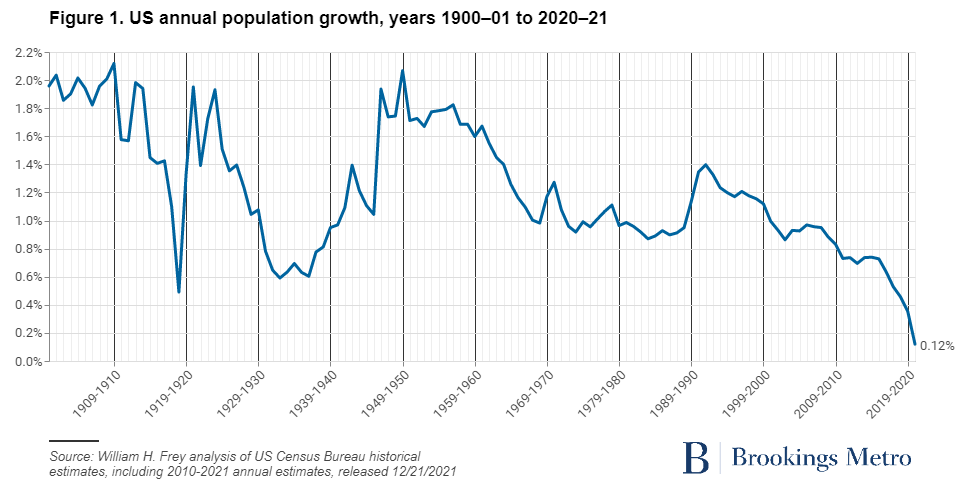
The USA population grew 0.12% from July 1, 2020 to July 1, 2021, according to the US Census Bureau. That marks the lowest annual growth rate since the Census Bureau began keeping records on year-over-year population growth in 1900.
Brookings writes:
The new estimates show that during this period, population growth declined from the previous year in 31 of 50 states as well as Washington, D.C., with 18 states sustaining absolute population losses. In some states, especially California and New York, population losses were exacerbated by inflated out-migration during the pandemic, just as other states such as Florida and Texas benefitted from greater population in-flows.
While COVID-19 clearly played a role in this near-zero population growth, that growth had begun to plummet even before the pandemic. The 2020 census showed that from 2010 to 2020, the U.S. registered the second-lowest decade growth in its history—a consequence, in large part, of the aging of its population, which led to more deaths and fewer births. Nonetheless, the new data shows that pandemic-related demographic forces have left an indelible mark on the nation.
[…]
Both natural increase and immigration contributions to population growth became markedly reduced in 2020-21, in large part due to the pandemic. (Pandemic impacts were partially evident already in 2019-20 data.) Population gains attributable to natural increase rose as high as 1.1 million in 2016-17, but dropped to 677,000 in 2019-20 and then again to 148,000 in 2020-21. Over the past two years, the number of deaths in the U.S. rose by 363,000 (from 3.07 million to 3.43 million) and the number of births declined by 166,000 (from 3.74 million to 3.58 million)—reflecting, in part, pandemic-related decisions to postpone having children (see downloadable Table A).
Immigration levels plummeted as well, exacerbating the impacts of earlier policy restrictions. The new estimates showed a net international migration of just 256,000 in 2020-21—down from an already low 477,000 in 2019-20 and from over 1 million per year in the middle of the 2010s decade.


